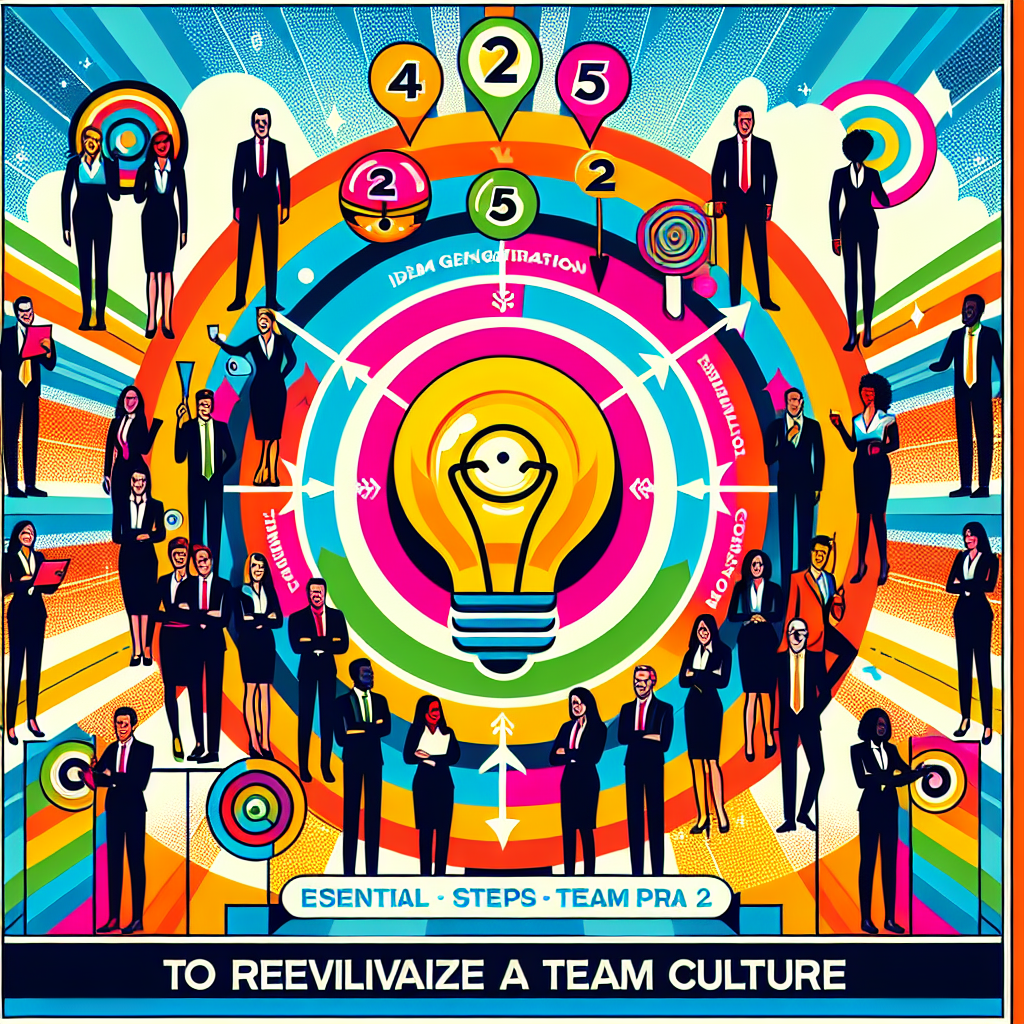Revitalize Your Team Culture: 6 Essential Steps – Part 2
In the first part of our series on revitalizing team culture, we explored the foundational steps necessary to create a thriving work environment. In this second installment, we delve deeper into advanced strategies that can further enhance team dynamics and productivity. By implementing these steps, organizations can foster a culture of collaboration, innovation, and mutual respect.
Step 4: Encourage Open Communication
Open communication is the cornerstone of a healthy team culture. It involves creating an environment where team members feel comfortable sharing their ideas, concerns, and feedback without fear of retribution. According to a 2020 study by Gallup, teams that communicate effectively are 25% more productive than those that do not.
- Implement regular team meetings where everyone has a chance to speak.
- Use digital tools like Slack or Microsoft Teams to facilitate ongoing communication.
- Encourage leaders to model transparency and openness in their interactions.
Case Study: At Google, the practice of “psychological safety” is emphasized, allowing team members to take risks and voice their opinions without fear of negative consequences. This approach has been linked to higher levels of innovation and team performance.
Step 5: Foster a Culture of Recognition
Recognition is a powerful motivator that can significantly impact team morale and engagement. A survey by O.C. Tanner found that 79% of employees who quit their jobs cited a lack of appreciation as a key reason for leaving. To prevent this, organizations should prioritize recognizing and rewarding team members for their contributions.
- Implement a formal recognition program that highlights achievements.
- Encourage peer-to-peer recognition to build camaraderie.
- Celebrate both small wins and major milestones.
Example: At Zappos, the company culture is built around appreciation and recognition. Employees are encouraged to recognize their peers through a variety of programs, including the “Zollars” system, where they can award points to colleagues for exceptional work.
Step 6: Invest in Professional Development
Investing in the professional growth of team members not only enhances their skills but also demonstrates the organization’s commitment to their long-term success. According to LinkedIn’s 2021 Workplace Learning Report, 94% of employees would stay at a company longer if it invested in their career development.
- Offer training programs and workshops to enhance skills.
- Provide access to online learning platforms like Coursera or Udemy.
- Encourage mentorship and coaching relationships within the team.
Case Study: IBM has long been a proponent of continuous learning, offering its employees access to a wide range of educational resources and development programs. This commitment to learning has helped IBM maintain its competitive edge in the tech industry.
Conclusion
Revitalizing team culture is an ongoing process that requires dedication and strategic planning. By encouraging open communication, fostering a culture of recognition, and investing in professional development, organizations can create an environment where team members feel valued and motivated. These steps not only enhance team performance but also contribute to higher employee satisfaction and retention. As we continue to navigate the complexities of the modern workplace, prioritizing team culture will remain a critical factor in achieving organizational success.



